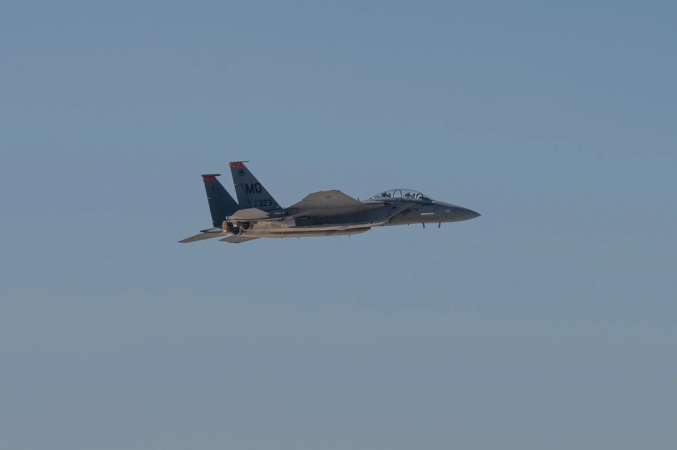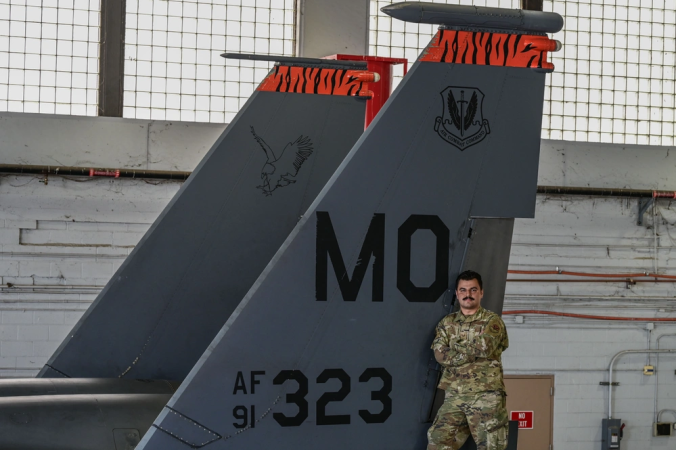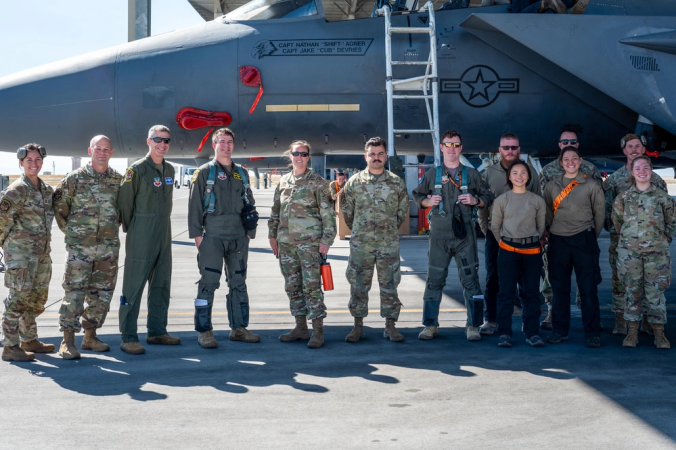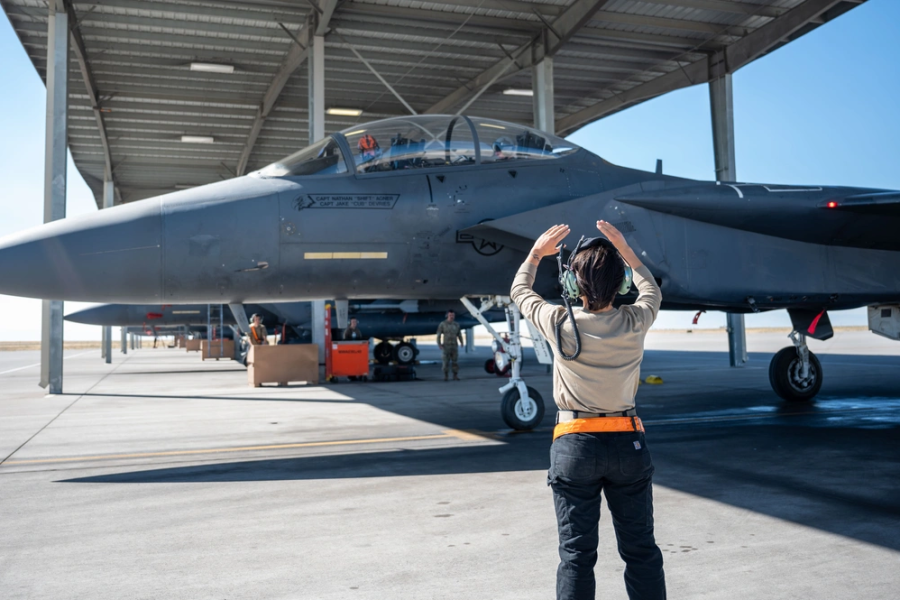The phoenix isn’t the only bird that can rise from the ashes: Earlier this month, Airmen at Mountain Home Air Force Base, Idaho, took an F-15E Strike Eagle through its final check flight four years after a landing gear collapse in 2020 left it grounded.
Master Sgt. Donald Root, lead production superintendent at the 391st Fighter Generation Squadron, was there that day and said in a press release that the jet had to be lifted off the runway.
“It was a critical moment that marked the beginning of a long and challenging journey,” he said in the release.
The base declined to answer questions about the nature of the incident or how much damage it caused, but it said nobody was injured in the event.

Rebuilding tail number 323 took an enormous effort involving local maintenance shops and visiting depot field teams. They had to fabricate custom parts such as bulkheads made out of titanium, something never done before at Mountain Home.
“Every shop on base has touched this aircraft,” Root said. “It’s truly a collective effort.”
It was a bumpy road marked by technical challenges, such as a damaged wire harness in the right wing that needed a complete re-wiring. There were also delays waiting for repair materials to arrive, and funding challenges for having depot field teams come out to help.
“Funding was a major factor that affected our timeline,” Root said. “We had to ensure everything was in place before moving forward with the rebuild.”
It was also a learning experience for Staff Sgt. Alex Torres, the lead floor supervisor and the jet’s dedicated crew chief. His team had to coordinate with other shops such as fuels and sheet metal to make sure the workflow stayed smooth.
“As a brand-new staff sergeant, I had to learn quickly and trust my intuition to get the job done,” Torres said in the release. “I couldn’t have done it without the support of my team.”

It wasn’t clear when 323 took its first flight since the incident, but Oct. 2 marked its final check flight before returning to service. Built in 1991, the 33-year-old aircraft likely still has plenty of flying ahead. Its older sibling, tail number 89-0487, logged its 15,000th flight hour in May, taking it over twice the length of the Strike Eagle’s original service length. But after four years on the bench, it might take 323 a while to catch up.
Air Force officials often point out that the branch’s fleet of aircraft is older and smaller than ever before, which means each flight-worthy tail makes a big difference towards helping aircrew meet training and operational requirements.
In 2023, an F-22 returned to flight five years after a botched takeoff that saw it slide 6,500 feet down a runway in Nevada. The Air Force is also trying to salvage a working F-35 out of two damaged ones in an effort officials are calling “Franken-bird.” The Air Force has 218 Strike Eagles, and maintainers at Mountain Home were proud to see one more rejoin the fleet.
“Every aircraft tells a story, and the story of 323 is one of teamwork and determination,” Root said. “We’re excited to see it back in the skies, ready for its mission.”

